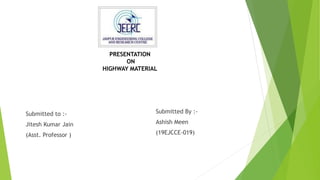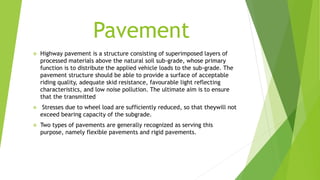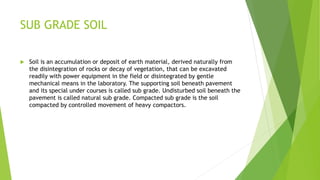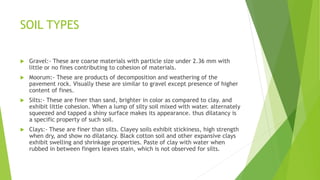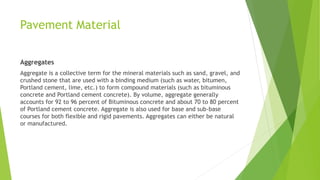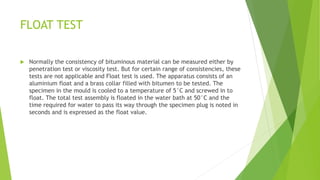The document provides information on various materials used in highway construction. It discusses the types and functions of pavement, including flexible and rigid pavements. It describes the requirements of ideal pavements. It also discusses various pavement materials like soil, aggregates, bitumen and their properties. It outlines various tests conducted on these materials like penetration test, abrasion test, crushing test, to evaluate their suitability for pavement construction.
